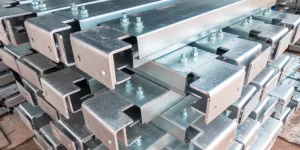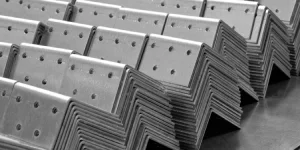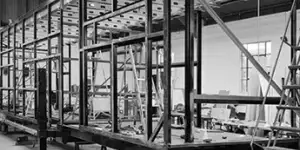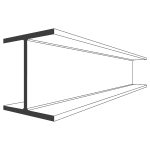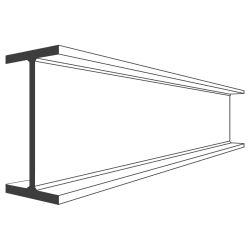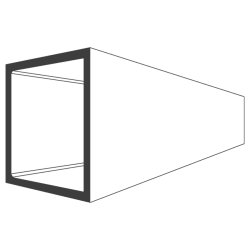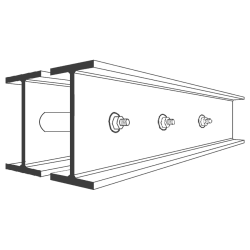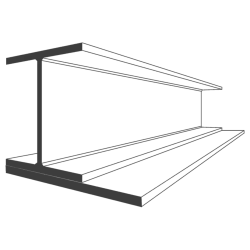News
5 Factors to Consider When Starting a Metal Fabrication Project
Metal fabrication projects, whether small-scale or large-scale, require meticulous planning and consideration of various factors to ensure success. From the initial concept to the final product, every step plays a crucial role in determining the project's outcome. This comprehensive guide will delve into the key considerations that should be at the forefront of your mind when embarking on a metal fabrication journey. Whether you're a seasoned professional or a newcomer to the world of metalworking, understanding these factors will pave the way for a smoother and more efficient fabrication process.
Let's explore the critical elements that can make or break your metal fabrication project.
1) Project Scope and Objectives
Defining the scope and objectives of your metal fabrication project is paramount to its success. Begin by clearly outlining the project's boundaries specifying the size, complexity, and purpose of the fabricated metal product. Establishing specific and achievable objectives ensures a focused approach throughout the fabrication process.
By carefully considering these factors, you lay the foundation for a project that meets your expectations and aligns seamlessly with your overall goals. The project scope and objectives act as a roadmap, guiding every decision and action, and serve as the basis for effective collaboration among team members. Whether a customized component or an intricate structure, a well-defined scope and set objectives are instrumental in steering your metal fabrication project toward successful completion.
2) Material Selection
Choosing the right materials is a critical aspect of any metal fabrication project. The selection process should be driven by a comprehensive understanding of project requirements. Factors such as strength, durability, corrosion resistance, and cost must be carefully weighed. It's essential to ensure that the chosen materials not only meet the functional needs of the project but also align with budget constraints.
Availability of materials is another key consideration, as it impacts project timelines. A judicious material selection process, considering both technical specifications and practical constraints, forms the bedrock of a successful metal fabrication endeavor. The chosen materials play a pivotal role in determining the performance, longevity, and overall quality of the fabricated product, making this step a crucial one in the planning phase.
3) Budgeting and Cost Estimation
Developing a detailed budget is a cornerstone in the planning of any metal fabrication project. This involves a comprehensive breakdown of costs, encompassing material expenses, labor costs, and equipment expenditures. Accurate cost estimation is crucial to prevent financial setbacks and ensure the project stays within financial constraints. It's imperative to factor in potential unforeseen costs that may arise during the fabrication process, allowing for a realistic and resilient budget.
A meticulous approach to budgeting not only provides financial clarity but also facilitates effective resource allocation. By understanding the financial landscape of the project, you can make informed decisions at every stage, contributing to the overall success and sustainability of the metal fabrication endeavor.
4) Design and Engineering
Collaboration with design and engineering professionals is a fundamental step in the metal fabrication process. Working closely with experts in these fields ensures the creation of a design that is not only aesthetically pleasing but, more importantly, feasible and effective in meeting project requirements. Assessing the structural integrity of the design is paramount, ensuring it aligns with safety standards and functional specifications.
Early engagement with design and engineering professionals allows for the identification and resolution of potential challenges or modifications, contributing to a smoother overall planning phase. The synergy between creative design and rigorous engineering is the backbone of a successful metal fabrication project, ensuring that the envisioned product is not only visually appealing but also structurally sound and operationally efficient.
5) Quality Control and Testing
Implementing robust quality control measures is imperative at every stage of the metal fabrication process. Beginning with the inspection of raw materials for quality and consistency, stringent controls continue through in-process inspections and culminate in thorough testing of the final product. This meticulous approach ensures that the fabricated metal product meets and exceeds industry standards and regulations. Quality control safeguards against defects and deviations, guaranteeing the integrity and reliability of the end result.
Inspections and testing serve as checkpoints, allowing for adjustments and corrections as needed, ultimately contributing to the production of a high-caliber and reliable metal product. A commitment to quality control is not just a regulatory requirement; it is a fundamental element in delivering a metal fabrication project that stands the test of time.
Conclusion
In conclusion, embarking on a metal fabrication project demands a holistic approach, considering factors that span from defining the project scope and objectives to stringent quality control measures. Each stage plays a crucial role in the success of the endeavor, shaping the final product's functionality, durability, and overall quality. As you navigate through the intricacies of material selection, budgeting, design collaboration, and quality control, the careful balance of these elements will determine the project's success.
For those seeking a reliable partner in the metal fabrication journey, consider CR Steel. With a commitment to precision and excellence, CR Steel offers a seamless integration of design, engineering, and fabrication expertise. Our focus on quality control ensures that every product meets the highest industry standards, providing you with confidence in the durability and performance of your fabricated metal components. Trust CR Steel to not only meet your project requirements but to exceed expectations. Your journey to successful metal fabrication starts here.
Q1: What factors should I consider when choosing materials for my metal fabrication project?
Consider strength, durability, corrosion resistance, and cost. Align chosen materials with project requirements and budget constraints, ensuring availability within your timeline.
Q2: How can I estimate the budget for my metal fabrication project accurately?
Develop a detailed budget covering material costs, labor, and equipment. Factor in potential unforeseen costs to prevent financial setbacks and allow for effective resource allocation.
Q3: Why is quality control important in metal fabrication, and how is it implemented?
Quality control ensures the integrity and reliability of the final product. It involves inspecting raw materials, conducting in-process inspections, and thorough testing. This safeguards against defects, deviations, and ensures compliance with industry standards.

